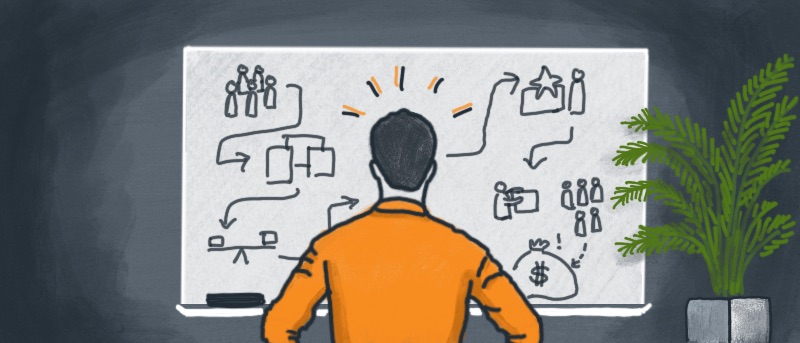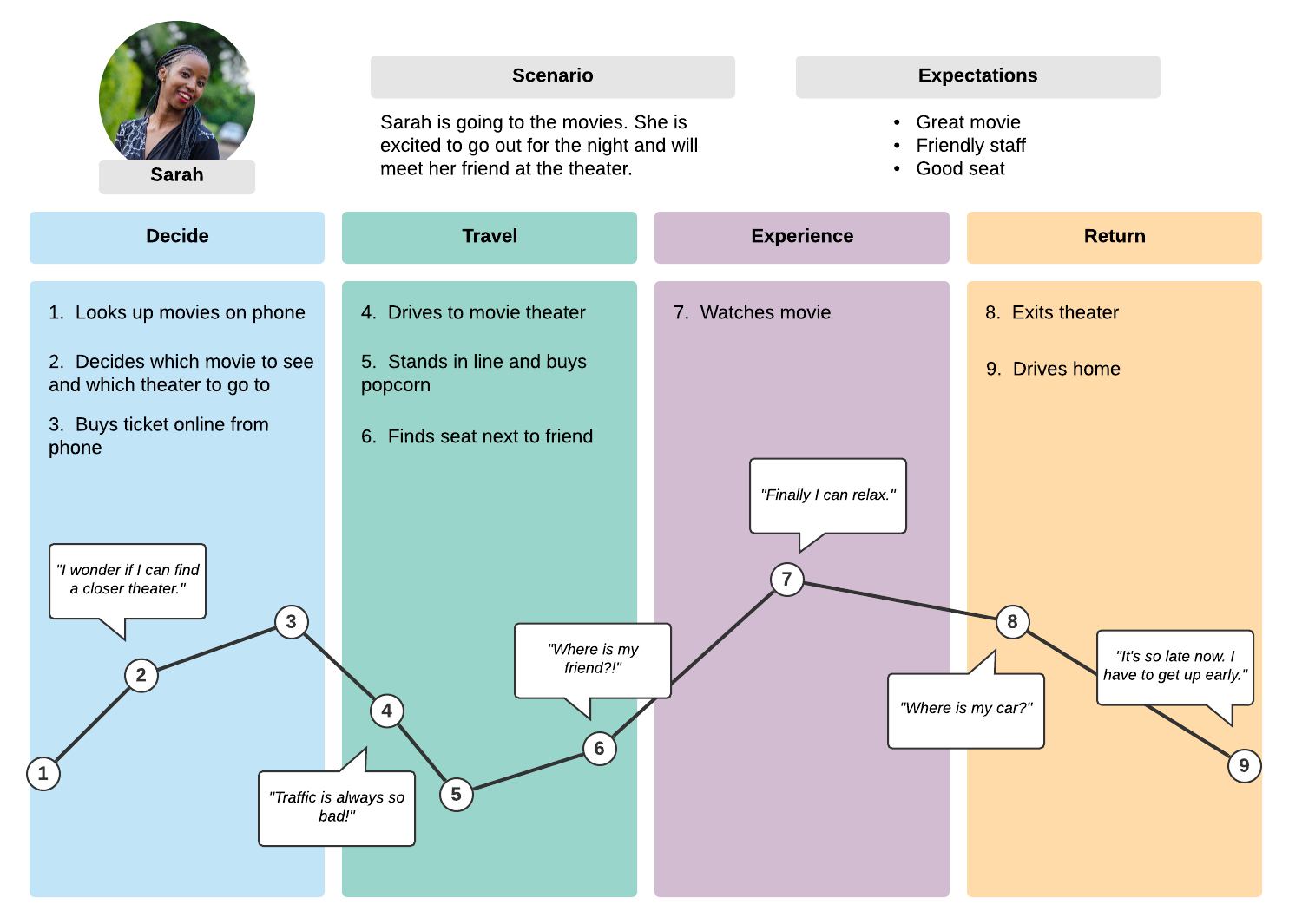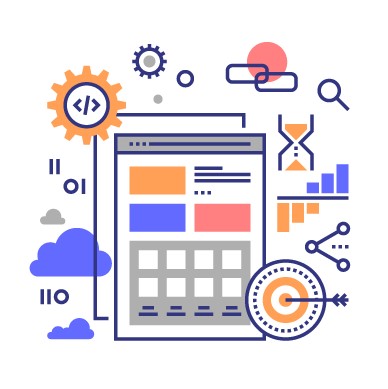
Adapting your customer journey as circumstances change
Lucid Content
Reading time: about 6 min
Topics:
Documenting the customer journey is a top priority for product, UX, and engineering teams, as well as for executive stakeholders. In order to build a product or service that customers will actually buy, your business must understand what your customers need and how they interact with your services and products
But those journeys aren’t static. When the world changes, the customer journey can change dramatically. And that matters because you can’t meet your customers if you don’t know which road they’re on. In times of crisis, change, and disruption, it’s vital to quickly adapt your customer journey to meet their needs.
How to adapt the customer journey during a crisis
It may seem strange to make reevaluating your customer journey a priority instead of reevaluating your product. In actuality, understanding a changing user journey gives real insights into your customer behavior that can inform strategic adjustments to your product.
Here are steps you can take to make smart adjustments to your customer journey.
Understand how customers are affected by the change
The best way to understand your customers isn’t through measurement or testing (though those are quite important). It’s through empathy. Put yourselves in your customers’ shoes.
If you, for instance, sell banking aggregator software, it’s likely that during a crisis your customers will have very real fears about the stability of their income and that they will turn to you for financial advice. How can you rise to that challenge? Can you offer free video chats with financial advisors? How about holding webinars about fluctuating stock values?
If you don’t know how to practice empathizing with your customers, turn to your customer personas and consider how a crisis would impact each aspect of their lives, from shopping to sleeping.
Listen to your customers and meet them where they are
During the COVID-19 pandemic, many businesses took great steps to help alleviate the stress of massive unemployment numbers and financial insecurity. Credit card companies waived interest and fees, utility companies suspended cutting off services, and car insurance companies returned premiums. They looked for ways they could help and they listened to their customers. Do the same: utilize empathy to understand your customers, then listen to what they need most. Proceed with a “give first” mindset.
During a crisis, every action is amplified and the selfless actions of businesses are remembered. Inversely, the tone-deaf responses from businesses reverberate and negatively impact the public’s perception of a brand for years to come. Remember: Your actions don’t have to be colossal. Simple kindness can be tremendously powerful.
Find out where the customer journey will be most affected
To find out how your customer journey is changing, start testing regularly. In addition, use your understanding of your customers to solve their current challenges. For instance, while on lockdown during COVID-19, many people found themselves craving human contact. To respond to that need, you could prioritize customer service and live chats.
Create a temporary journey map
Use this visual map to easily understand what your customer journey currently looks like. Continue to refer to the map as a base for ideation and problem-solving. But don’t just scribble it on a napkin: use the right software and tools to create a journey that can be changed as easily as dragging and dropping.
Don’t be afraid to experiment. After all, your temporary journey map is a sandbox to work out different ideas—no matter how wild.

Remain agile
Crises can change from day to day and from moment to moment. If you aren’t prepared to match change with agility, your bottom line could suffer. Remember that while you may come up with great solutions and innovative strategies to align your customer journey with customer behaviors, it’s only temporary. You’ll need to be prepared to readjust often and to adopt a mindset of agility that is not only comfortable with change but also expects it.
Document any updates or changes to the customer journey in one central location
If you’ve made changes to the customer journey in a silo, you may as well have not made any changes. Nothing can be implemented across the business without everyone knowing about the changes, so document in them in a central location. If you aren’t already storing your customer journey flowcharts online, this is the time to do it.
Don’t get attached
It’s tempting to allow your biases to inform your customer journey. That’s why, when it comes to making a great user journey, you’re going to be a scientist—form a hypothesis, test your theory, and then look at the results. Then find ways to improve. Make testing and retesting part of the process. That’s the only way to know for sure if your new strategies are working.
Keys to successful implementation
A revamped user journey won’t do much good if it only causes internal and external chaos. The customer shouldn’t know that the journey has changed, but your internal teams should.
Communicate change across all stakeholders and teams
Keep everyone in the loop. Set expectations for every stakeholder and assign action items so everyone understands what their role is and what their next steps should be. Share the cloud-hosted location of the revamped customer journey so every team and stakeholder understands the role they are playing in the overall roadmap. It can be as simple as an email, but it might also be worth having a meeting to help explain changes and the reasons behind them.

Prepare customer support with tools and resources to manage the transition
It’s common for businesses to leave customer support out of important business changes. That definitely shouldn’t be the case. After all, your customer support team needs to know what your customers are experiencing to gain an understanding of how best to help. They can also deliver valuable feedback about how to best improve user experience and the customer roadmap.
Before implementing the changes, make sure your customer support team has the tools they’ll need. If, for instance, you’ll be using chatbots to direct customers to the correct customer support department, it’s important that your customer support specialists know how to integrate with bots.
Monitor the changes to the customer journey
Is it working? Do you need to make additional adjustments? You already understand the importance of testing, but it’s important to keep an active eye on the newest improvements to the customer journey because they’re the most vulnerable.
In a crisis, it can feel like the entire world is out of control. And, frankly, sometimes the entire world is out of control. But you can help your business navigate tumultuous times by enabling an empathetic, agile customer journey. A user journey that responds to customer needs is invaluable to solidifying your brand as one that can be turned to and trusted, no matter what. It can be a welcome source of stability in an unstable world. And who knows? If your customer journey is adaptive and innovative enough, it may inspire others to start reevaluating their own journeys.

Learn how Lucidchart can help UX designers build robust customer journeys and low-fi mockups.
Find out moreAbout Lucidchart
Lucidchart, a cloud-based intelligent diagramming application, is a core component of Lucid Software's Visual Collaboration Suite. This intuitive, cloud-based solution empowers teams to collaborate in real-time to build flowcharts, mockups, UML diagrams, customer journey maps, and more. Lucidchart propels teams forward to build the future faster. Lucid is proud to serve top businesses around the world, including customers such as Google, GE, and NBC Universal, and 99% of the Fortune 500. Lucid partners with industry leaders, including Google, Atlassian, and Microsoft. Since its founding, Lucid has received numerous awards for its products, business, and workplace culture. For more information, visit lucidchart.com.
